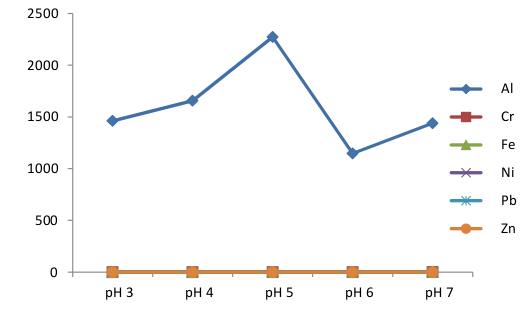Effect of pH on the Leaching of Potentially Toxic Metals from Different Types of Used Cooking Pots
Keywords:
Leaching, potential toxic metals, aluminum pot, clay pot, non stick pot, aluminum cast pot, stainless steel pot, glass potAbstract
Humans are exposed to Potentially Toxic Metals (PTMs) through many routes. Cooking foods in cookwares which are prone to material leaching can be an exposure route to PTMs. This study assessed the effect of pH on the leaching of some PTMs from used cooking pots into deionized water. Series of deionized waters were prepared from pH 3 to 7. Each water was brought to boil in clay, non-stick, stainless steel, cast aluminum, pressed aluminum and glass pots respectively. The PTMs leached from each sample pot were determined by Inductively Couple Plasma-Optical Emission Spectrophotometer (ICP-OES) (Agilent nu7m technologies 700 series). The deionized water from the aluminum cast pot and nonstick pot gave the highest concentration of aluminum (2273 µg/L) and Zinc (24.39 µg/L) respectively. While that from the clay pot gave the highest concentrations of Chromium and Nickel, (7.27 and 22.63 µg/L) and that from the stainless-steel pot gave the highest concentration of iron (237 µg/L) and lead (24.39 µg/L). No PTM was found in the deionized water from the glass pot. The results from this study showed more leaching of PTMs into deionized water occurred more at lower pHs (pH 3 to 5) than at neutral pH for almost all the pots. Thus, cooking of acidic foods in pots except when glass pots are used should be avoided. The results of this study therefore reveal the health implications associated with using metal pots for cooking slightly acidic foods as metals can be easily leached from the pots into the foods.

Published
How to Cite
Issue
Section
Copyright (c) 2022 O. T. Fatunsin, O. F. Adeyeye, K. O. Olayinka, T. O. Oluseyi

This work is licensed under a Creative Commons Attribution 4.0 International License.





